




Wooden surfaces are a beautiful addition to any home, but they require regular cleaning and maintenance to keep them looking their best. In light of recent events, there has been an increased focus on disinfecting our homes to prevent the spread of germs and bacteria. One common question that arises is whether it is safe to use bleach on wood.
The answer to this question is not as straightforward as it may seem. While bleach is a powerful disinfectant that can kill a wide range of bacteria and viruses, it can also be damaging to certain types of wood. The harsh chemicals found in bleach can strip away the natural oils and finish on wood, causing it to become dry, faded, and brittle.
However, there are ways to safely clean and disinfect wooden surfaces without resorting to bleach. One option is to use a mixture of mild dish soap and warm water. This can be applied to the wood using a soft cloth or sponge and gently wiped clean. Another alternative is to use a vinegar and water solution, which can also help to kill bacteria and germs.
It is important to note that regardless of the cleaning method you choose, it is always best to test it on a small, inconspicuous area of the wood first to ensure that it does not cause any damage or discoloration. Additionally, it is advisable to avoid using abrasive scrub brushes or harsh chemicals on wooden surfaces, as these can also cause damage.
In conclusion, while bleach can effectively kill germs and bacteria, it is not always safe to use on wood. There are alternative cleaning and disinfecting methods that can be just as effective without the risk of damaging your wooden surfaces. It is important to always read and follow the manufacturer’s instructions for any cleaning products you use, and to test any new products or methods on a small area first. With proper care and regular maintenance, your wooden surfaces can stay clean and beautiful for years to come.
Is Bleach Safe for Wood? The Ultimate Guide
Introduction
Wood is a commonly used material for various surfaces in our homes, from furniture to flooring. Keeping wooden surfaces clean and properly disinfected is essential for maintaining their appearance and preventing the spread of germs. Bleach is a powerful disinfectant that many people use for cleaning purposes. However, there is some debate about whether bleach is safe to use on wood. In this ultimate guide, we will explore the safety of using bleach on wood surfaces and provide tips on how to properly clean and disinfect your wooden surfaces.
Can You Use Bleach on Wood?
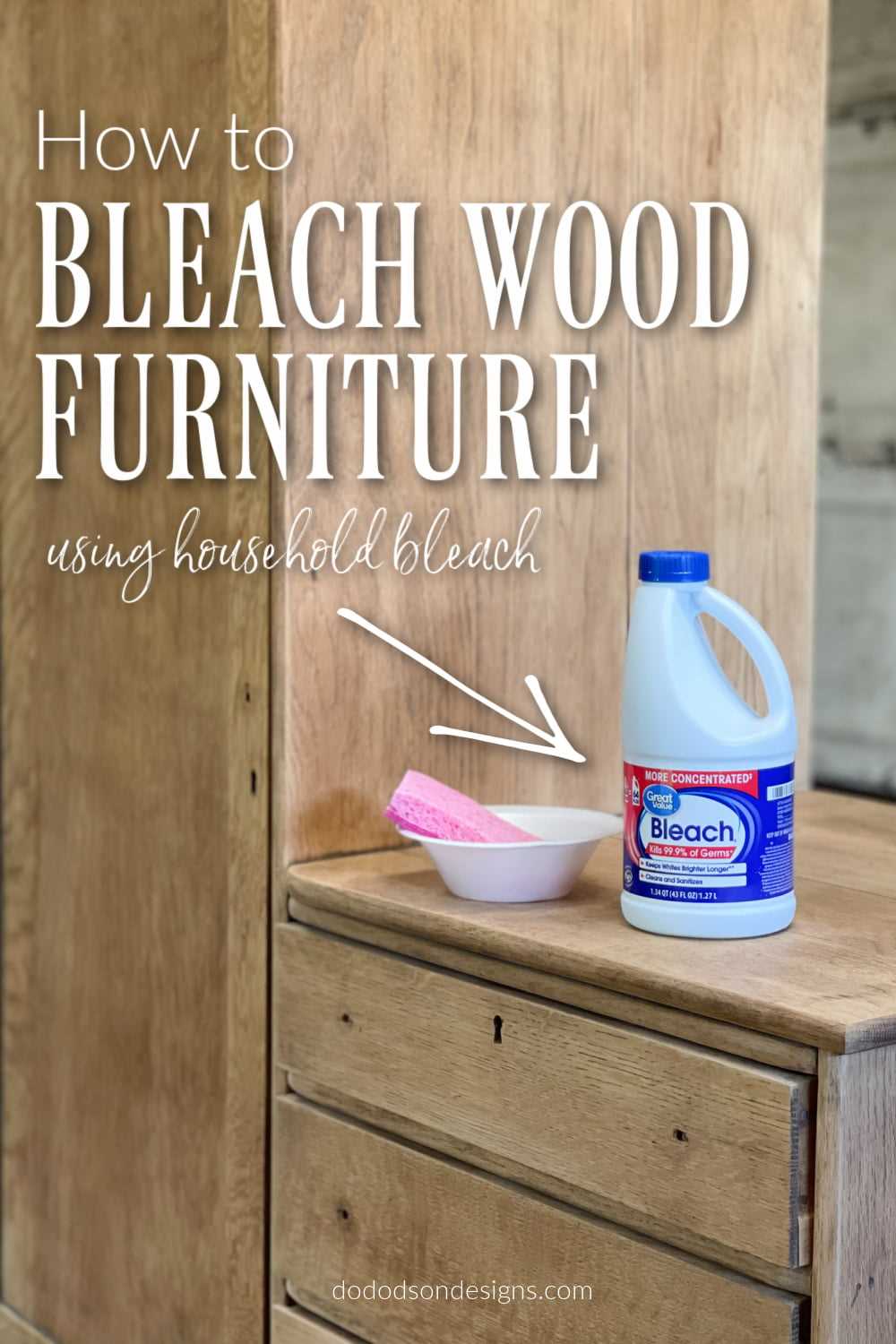
The short answer is yes, you can use bleach on wood, but with caution. Bleach is a strong chemical that can have adverse effects on wood if not used correctly. It can cause discoloration, weaken the wood fibers, and even damage the finish. However, if used properly, bleach can be an effective disinfectant for wooden surfaces.
Preparing the Wood
Before using bleach on wood, it is important to prepare the surface properly. Start by removing any dust, dirt, or debris from the wood using a soft cloth or vacuum cleaner. This will ensure that the bleach can penetrate the wood and disinfect it effectively. If the wood has any existing finishes, such as paint or varnish, consider removing them before applying bleach.
Diluting the Bleach
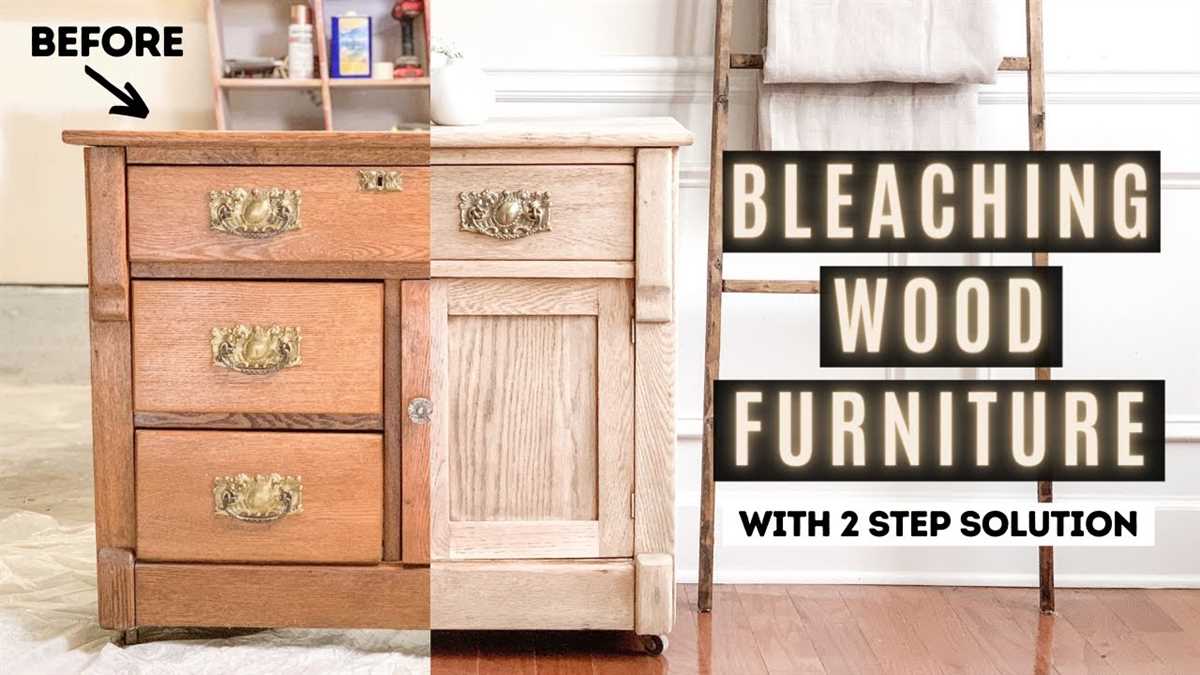
Bleach should always be diluted before using it on wood surfaces. The exact dilution ratio will depend on the type and strength of bleach you have. Generally, a solution of 1 part bleach to 10 parts water is a safe ratio for wood. Be sure to follow the manufacturer’s instructions on the bleach bottle for specific guidance on dilution.
Testing on a Small Area
Before applying bleach to the entire wood surface, it is recommended to test it on a small, inconspicuous area first. Apply a small amount of the diluted bleach solution to the test area and wait for a few minutes. Check for any adverse reactions, such as discoloration or damage, before proceeding with the full treatment.
Applying the Bleach
To apply the bleach solution, use a soft cloth or sponge and dip it into the diluted bleach. Gently wipe the wood surface, ensuring even coverage. Avoid saturating the wood with the bleach solution, as excessive moisture can damage the wood. Work in small sections and be thorough but gentle in your application.
Rinsing and Drying
After disinfecting the wood with bleach, it is crucial to rinse off any residual bleach from the surface. Rinse with clean water using a separate cloth or sponge. Once the bleach is fully removed, dry the wood thoroughly with a clean, dry cloth to prevent any moisture from lingering and causing damage.
Protecting and Restoring the Wood
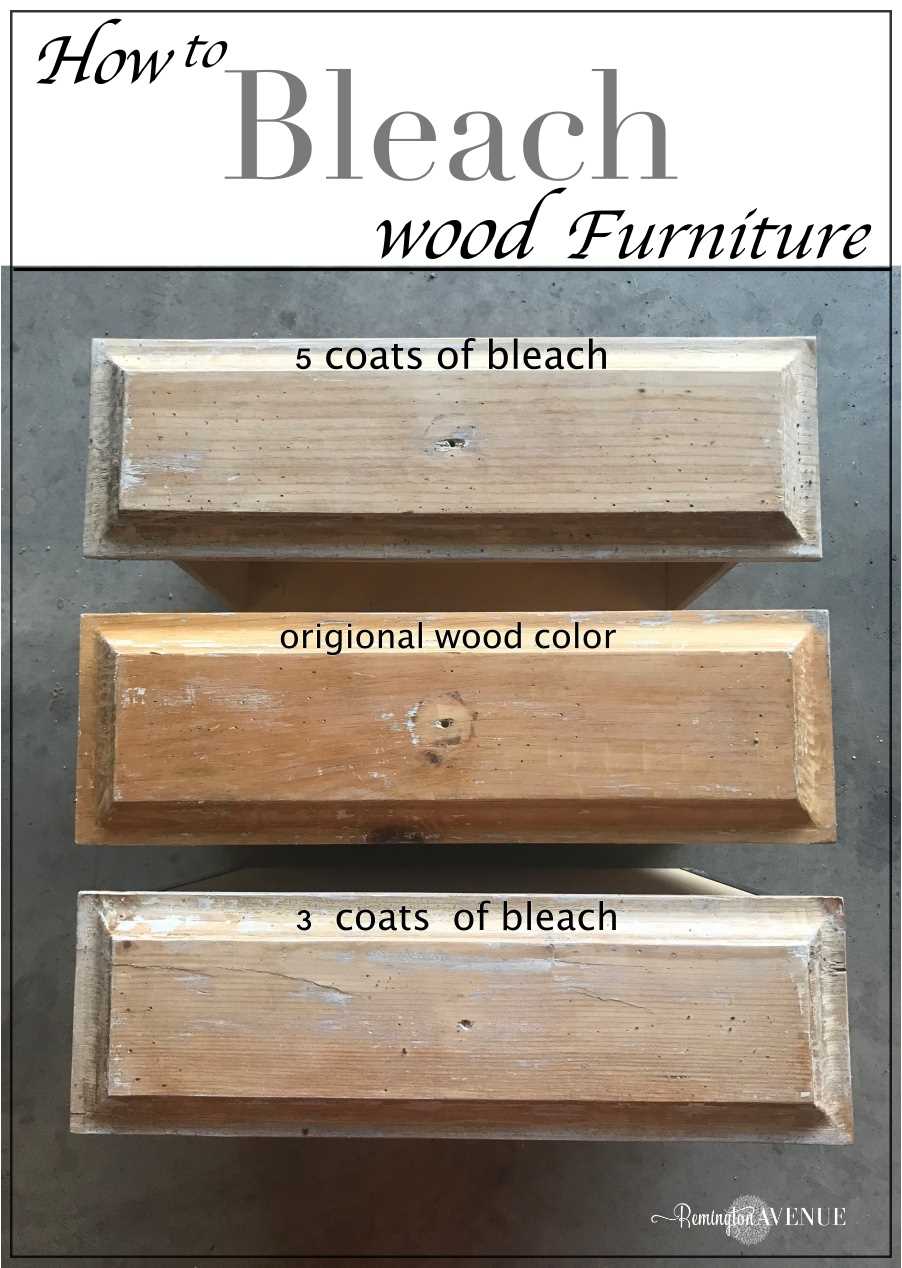
After cleaning and disinfecting the wood with bleach, it is important to protect and restore its natural beauty. Apply a wood sealer or finish to protect the surface from future damage and maintain its appearance. You can also consider using wood oils or polishes to enhance the wood’s shine and nourish the fibers.
Conclusion
Using bleach on wood can be safe if done correctly. It is essential to prepare the wood, dilute the bleach properly, test it on a small area, apply it carefully, rinse off any residual bleach, and protect the wood with appropriate finishes. By following these guidelines, you can effectively clean and disinfect your wooden surfaces while preserving their beauty and longevity.
Understanding the Effectiveness of Bleach on Wood
Bleach is a commonly used disinfectant that is known for its strong cleaning properties. Many people wonder whether it is safe to use bleach on wood, as wood is a porous material that can be easily damaged. In order to understand the effectiveness of bleach on wood, it is important to consider a few key factors.
Type of Wood
The effectiveness of bleach on wood can vary depending on the type of wood being treated. Hardwoods, such as oak or maple, tend to be more resistant to damage from bleach than softwoods, such as pine or cedar. This is because hardwoods have a tighter grain structure, making them less porous and less likely to absorb bleach.
Concentration of Bleach
The effectiveness of bleach on wood also depends on the concentration of bleach being used. Using a higher concentration of bleach may lead to more effective disinfection, but it can also increase the risk of damaging the wood. It is important to follow the manufacturer’s instructions and dilute the bleach properly to avoid any potential harm.
Surface Finish
The presence of a surface finish, such as varnish or lacquer, can affect the effectiveness of bleach on wood. These finishes create a protective barrier that can prevent the bleach from fully penetrating the wood and disinfecting it. If the wood has a surface finish, it is recommended to remove it before applying bleach for optimal effectiveness.
Proper Application
In order to effectively use bleach on wood, it is crucial to follow the proper application techniques. This includes wearing protective gloves and eyewear, applying the bleach evenly, and allowing sufficient contact time for the bleach to work. It is also important to thoroughly rinse the wood after applying bleach to remove any residue and prevent any potential damage.
Overall, while bleach can be effective in disinfecting wood surfaces, it is important to take precautions and consider the type of wood, concentration of bleach, presence of a surface finish, and proper application techniques to minimize any potential damage. If you are unsure about using bleach on a specific type of wood or have concerns about its effectiveness or safety, it is best to consult a professional for guidance.
Properly Cleaning Wooden Surfaces with Bleach

Bleach is a powerful disinfectant that can be used to clean and sanitize various surfaces, including wood. However, it is important to use bleach properly to avoid damaging the wood. Here are some steps to properly clean wooden surfaces with bleach:
1. Prepare the area
Before starting the cleaning process, remove any items from the wooden surface and clear the area. This will make it easier to clean the entire surface and avoid any interference.
2. Dilute the bleach
Bleach should always be diluted before using it on wood. Mix one part bleach with ten parts water in a container. This diluted solution will help to protect the wood while still disinfecting it effectively.
3. Test the solution
Before applying the bleach solution to the entire wooden surface, it is recommended to test it on a small, inconspicuous area. Apply a small amount of the diluted bleach to the test area and check for any discoloration or damage after a few minutes. If there is no adverse reaction, proceed with the cleaning process.
4. Apply the bleach solution
Using a sponge or a soft cloth, dip it into the diluted bleach solution and wring out any excess liquid. Gently wipe the wooden surface with the damp sponge or cloth, ensuring that the entire surface is covered. Pay extra attention to any areas that may be heavily soiled or contaminated.
5. Let it sit
After applying the bleach solution, allow it to sit on the wooden surface for a few minutes. This will give the bleach enough time to disinfect the wood and kill any bacteria or viruses present.
6. Rinse with water
Once the bleach has been given enough time to work, rinse the wooden surface thoroughly with clean water. Use a clean sponge or cloth dampened with water to remove any remaining bleach residue. Ensure that the surface is completely rinsed to avoid any potential damage.
7. Dry the surface
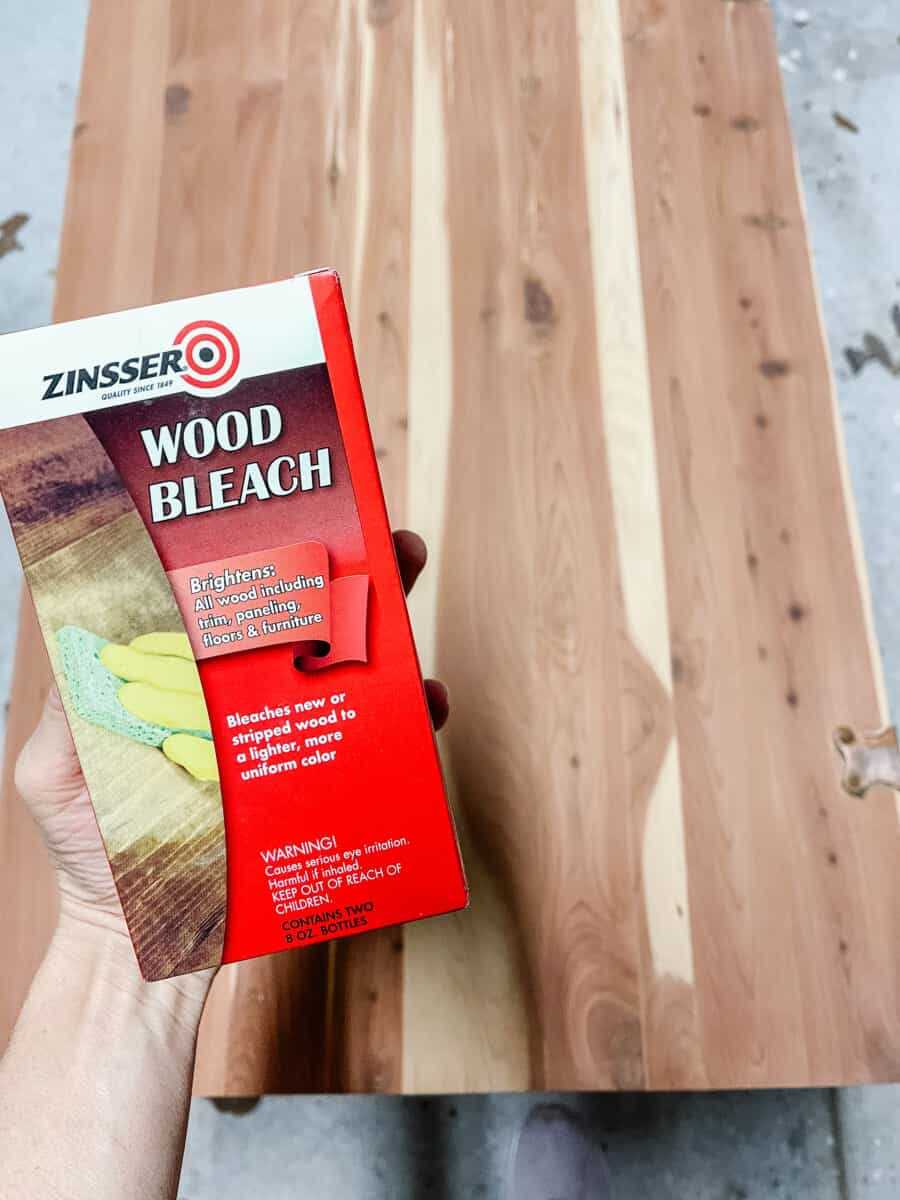
After rinsing, use a clean, dry cloth to dry the wooden surface. Removing excess moisture will help prevent any warping or damage to the wood. Ensure that the surface is completely dry before placing any items back on it.
8. Apply a protective coating (optional)
If desired, a protective coating such as wax or varnish can be applied to the cleaned and dried wooden surface. This will help restore the wood’s natural shine and provide an additional layer of protection against future damage.
Note: It is important to always follow the instructions provided on the bleach product and to wear protective gloves and eyewear when handling bleach. Proper ventilation is also recommended to avoid inhaling fumes.
In summary, bleach can be safely used to clean and disinfect wooden surfaces if used properly. By following these steps, you can effectively sanitize your wooden surfaces without causing any damage or discoloration.
Tips for Disinfecting Wood Safely
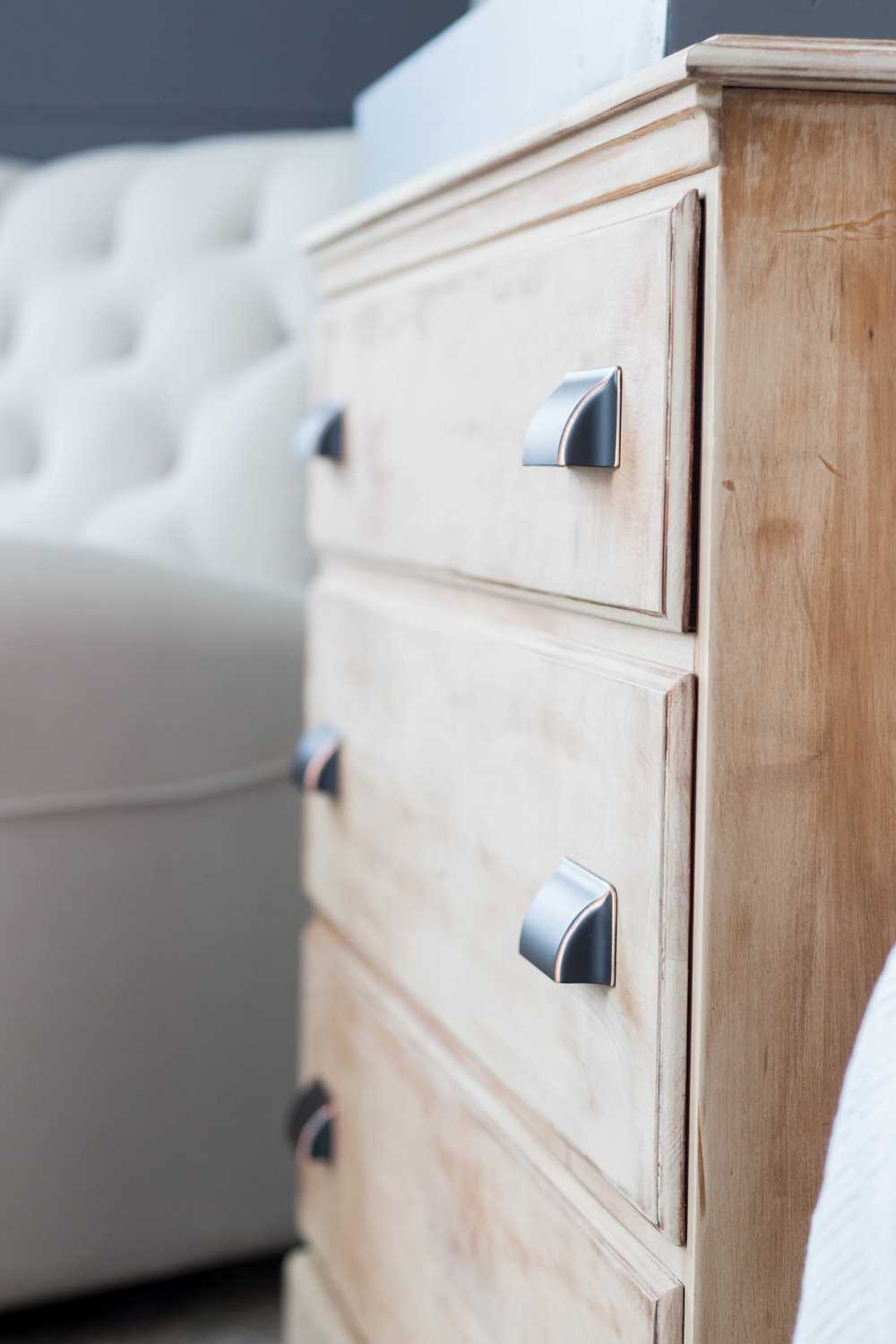
When it comes to disinfecting wood surfaces, it is important to take certain precautions to protect the integrity of the wood while still effectively killing germs and bacteria. Here are some tips for safely disinfecting wood:
1. Test in an inconspicuous area
Before applying any disinfectant to a wood surface, it is always a good idea to test it in a small, inconspicuous area first. This will help ensure that the disinfectant does not cause any damage or discoloration to the wood.
2. Choose a suitable disinfectant
Not all disinfectants are safe to use on wood surfaces. It is important to choose a disinfectant that is specifically formulated for use on wood or that is recommended by the manufacturer. Avoid using bleach or other harsh chemicals, as they can damage the wood.
3. Dilute the disinfectant
If using a disinfectant that requires dilution, be sure to follow the instructions carefully. Using a stronger concentration than recommended can cause damage to the wood surface.
4. Use a soft cloth or sponge
When applying the disinfectant, use a soft cloth or sponge to gently clean the wood surface. Avoid using abrasive materials or scrub brushes, as they can scratch and damage the wood.
5. Wipe in the direction of the wood grain
When cleaning the wood surface, it is best to wipe in the direction of the wood grain. This helps prevent any potential damage and ensures a thorough cleaning.
6. Dry the surface thoroughly
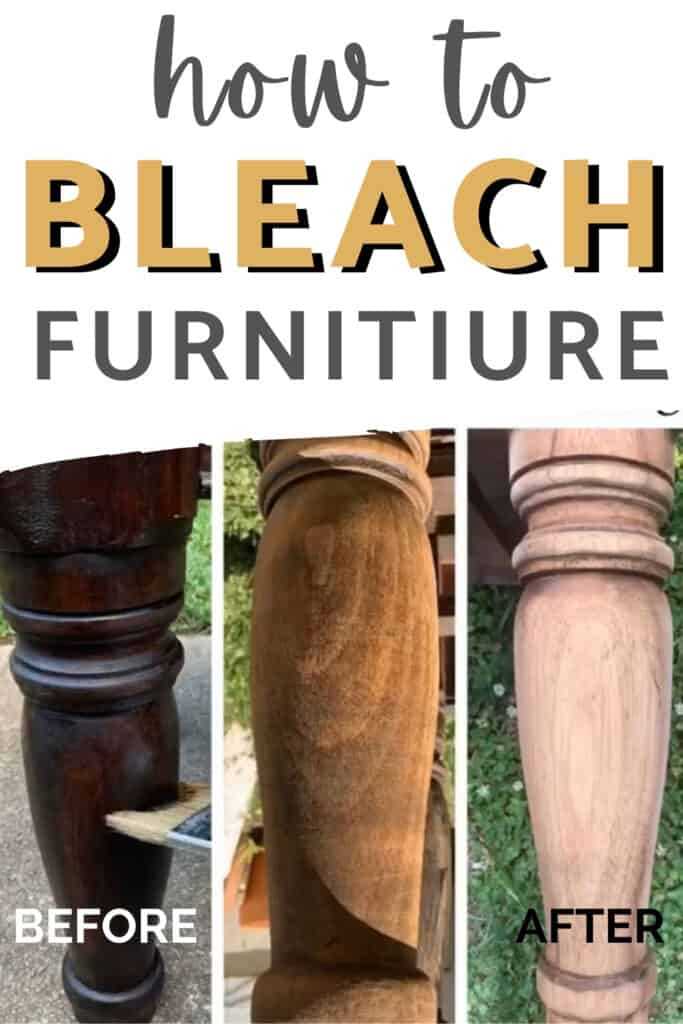
After disinfecting, be sure to dry the wood surface thoroughly. Excess moisture can seep into the wood and cause it to warp or swell.
7. Apply a protective finish
To further protect the wood surface, consider applying a protective finish, such as wax or varnish, after disinfecting. This will help seal the wood and prevent any future damage.
8. Regularly clean and maintain the wood
To keep your wood surfaces clean and safe, it is important to regularly clean and maintain them. Wipe up spills immediately, use coasters or placemats to protect the surface, and avoid placing hot or wet items directly on the wood.
By following these tips, you can safely disinfect your wood surfaces without causing any damage or compromising their integrity.
Alternative Methods for Cleaning and Disinfecting Wood
Vinegar and Water Solution
One alternative method for cleaning and disinfecting wood is to use a vinegar and water solution. Vinegar has natural cleaning properties and can effectively remove dirt and grime from wood surfaces.
To create the solution, mix equal parts of white vinegar and water in a spray bottle. Spray the solution onto the wooden surface and use a soft cloth or sponge to gently scrub the area. Rinse with clean water and dry thoroughly.
It’s important to note that vinegar may not be as effective at killing certain types of bacteria or viruses compared to bleach or other disinfectants.
Soap and Water
Another alternative method is to use soap and water for cleaning and disinfecting wood. This method is gentle and suitable for regular maintenance cleaning.
Fill a bucket with warm water and add a few drops of mild dish soap. Dip a soft cloth or sponge into the soapy water and wring out any excess moisture. Gently scrub the wooden surface, paying attention to any areas with dirt or stains. Rinse with clean water and dry thoroughly.
While soap and water can help remove dirt and grime, they may not be as effective at killing bacteria or viruses as stronger disinfectants.
Hydrogen Peroxide
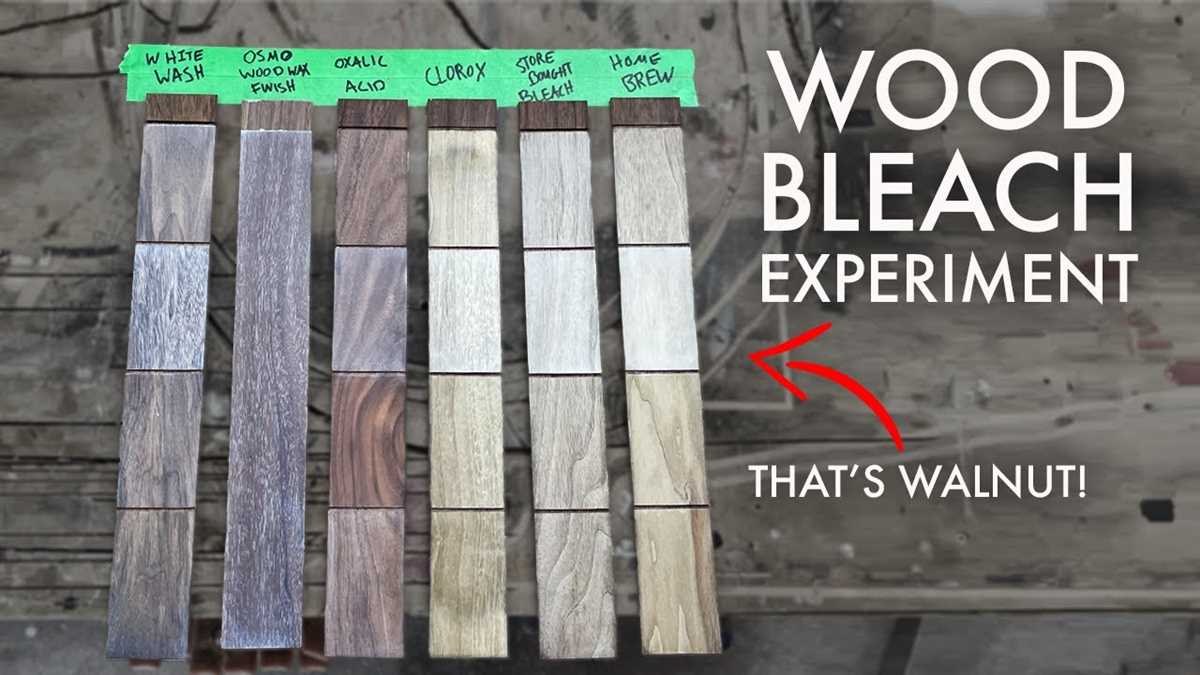
Hydrogen peroxide is another alternative method for cleaning and disinfecting wood. It has natural antibacterial properties and can help kill germs on the surface.
To use hydrogen peroxide, pour a small amount onto a clean cloth or sponge. Gently scrub the wooden surface, ensuring that the peroxide covers the entire area. Let it sit for a few minutes to allow the peroxide to disinfect. Rinse with clean water and dry thoroughly.
It’s important to test hydrogen peroxide on a small, inconspicuous area of the wood first to ensure that it doesn’t cause any damage or discoloration.
Steam Cleaning
Steam cleaning is a safe and effective method for cleaning and disinfecting wood surfaces. The high temperature of the steam can kill bacteria and viruses without the need for harsh chemicals.
Use a steam cleaner specifically designed for cleaning wood surfaces. Follow the manufacturer’s instructions for operating the steam cleaner and ensure that the wood surface is able to withstand the heat and moisture from the steam. Move the steam cleaner slowly over the wooden surface, being careful not to saturate the wood. Dry the surface thoroughly after steam cleaning.
It’s important to note that steam cleaning may not be suitable for all types of wood, so be sure to check the manufacturer’s recommendations before using this method.
Regular Cleaning and Maintenance
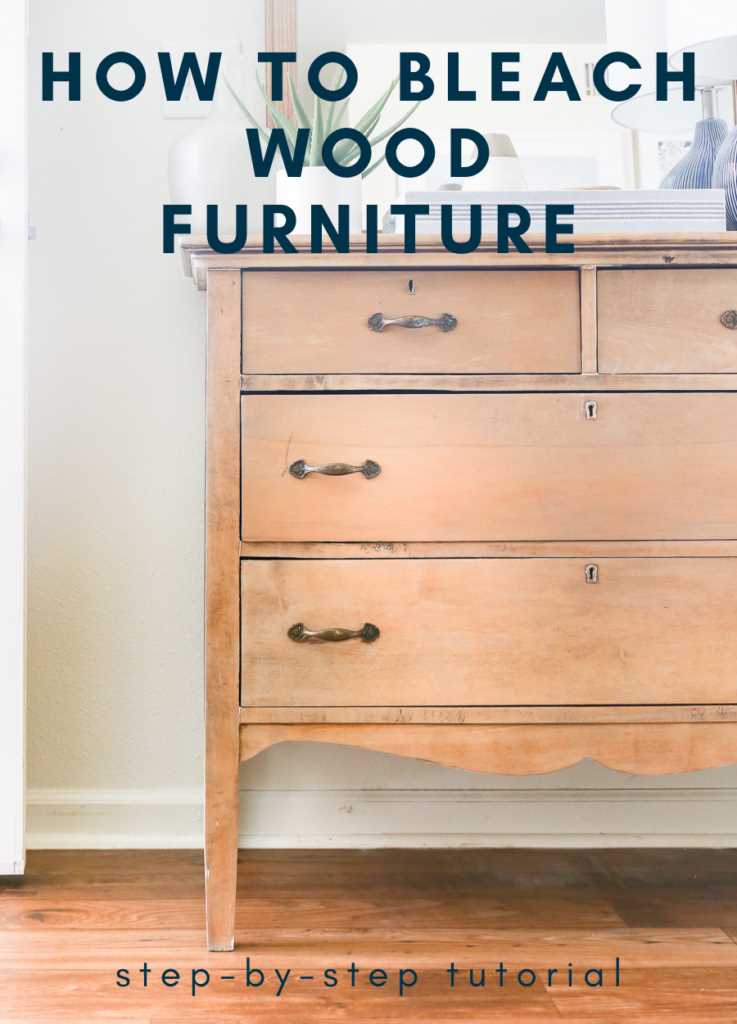
Regular cleaning and maintenance can also help keep wood surfaces clean and free from bacteria and viruses. Wiping surfaces regularly with a soft cloth or dusting can help remove dirt and dust that may harbor germs.
Spills should be cleaned up immediately to prevent the wood from absorbing moisture and developing mold or mildew. Use a clean, damp cloth to blot the spill and then dry the surface thoroughly.
Applying a protective sealant or polish to wood surfaces can also help prevent dirt and germs from penetrating the wood.
Remember to always follow the manufacturer’s recommendations for cleaning and maintenance of your specific wood surfaces.
- Vinegar and water solution
- Soap and water
- Hydrogen peroxide
- Steam cleaning
- Regular cleaning and maintenance
FAQ
Is bleach safe to use on wood? How does it affect the wood?
Bleach can be used on wood, but it should be used cautiously. While bleach is effective at disinfecting and killing bacteria and viruses, it can also damage the wood if not used properly. It can strip the wood of its natural oils and cause it to become dry and brittle. It is important to dilute the bleach with water and apply it sparingly to prevent any damage to the wood.
What is the proper way to clean and disinfect wooden surfaces?
The proper way to clean and disinfect wooden surfaces is to first remove any dust or debris using a soft cloth or vacuum cleaner with a brush attachment. Then, mix a solution of bleach and water in a ratio of 1 part bleach to 10 parts water. Dampen a soft cloth with the diluted bleach solution and gently wipe down the wooden surface, making sure to cover all areas. Allow the bleach solution to sit on the wood for a few minutes, and then wipe it off with a clean, damp cloth. Finally, dry the wood thoroughly with a soft cloth to prevent any moisture from seeping into the wood.
Can bleach kill bacteria and viruses on wooden surfaces?
Yes, bleach is effective at killing bacteria and viruses on wooden surfaces. It acts as a disinfectant, killing the microorganisms that may be present on the wood. However, it is important to note that bleach may not be suitable for all types of wood and can cause damage if not used correctly. It is always best to test a small, inconspicuous area of the wood before applying bleach to the entire surface.
Are there any alternative cleaning agents that can be used on wood?
Yes, there are alternative cleaning agents that can be used on wood. Some common alternatives to bleach include vinegar, hydrogen peroxide, and rubbing alcohol. These substances also have antimicrobial properties and can effectively kill bacteria and viruses. It is important to dilute these substances with water and test them on a small area of the wood before using them on the entire surface.
What are the risks of using bleach on wood?
The main risk of using bleach on wood is that it can cause damage to the wood if not used properly. Bleach can strip the wood of its natural oils, making it dry and brittle. It can also cause the wood to become discolored or warped. Additionally, bleach can be harmful to humans and pets if ingested or if there is prolonged exposure to the fumes. It is important to wear protective gloves and ensure proper ventilation when using bleach.












